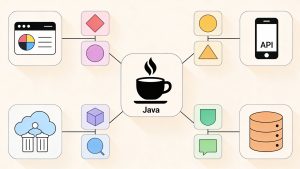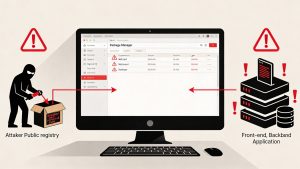Site reliability engineering (SRE) is an engineering-based approach to managing system operations. It merges software development skills with operational tasks. It emerged at Google when an engineering team sought a structured method for managing large-scale systems. The team shifted operations work—traditionally manual tasks—to engineers with programming expertise. They wrote software to minimize repetitive toil, boost system resilience, and keep critical services running. Engineers at Google wrote a book on SRE, which remains a valuable resource on this topic.
As a means to reduce repetitive work, handle fast releases, and maintain consistent stability, SRE provides a structured, repeatable method for managing complex systems. The main goals of SRE are creating scalable and highly reliable software systems. Site reliability engineers (SREs) use software to manage systems, solve problems, and automate operations tasks. They split their time between operations/on-call duties and developing systems and software that improve site reliability and performance.
SRE takes many of the tasks traditionally performed by operations teams, often manually, and instead gives them to engineers or ops teams that use software and automation to solve problems and manage production systems.
In this article, I will help you get a 360-degree view of site reliability engineering as it is:
How Does Site Reliability Engineering Work?
SRE works on finding a balance between releasing new features and making sure that those new features don’t cause outages or negatively impact users. SRE teams start by defining reliability goals and tracking the metrics that matter most. Those metrics include uptime, latency, error counts, and resource saturation.
SREs manage this balance by setting thresholds, known as Service Level Objectives (SLOs). For example, a platform might require 99.95% availability over 30 days. The SRE team observes the metrics. If they remain above or within the agreed threshold, development can continue. If metrics dip below targets, the team prioritizes stabilizing the service before rolling out new features.
Thus, an SLO is an agreement on the expected reliability of a service. It defines the acceptable levels of availability, latency and error rate. SLOs guide decisions such as when to release new code or prioritize engineering work that improves reliability.
Error budgets are central to this approach. An error budget is the maximum amount of time that a technical service can fail without contractual consequences. That budget connects directly to reliability targets. If the target is 99.9% availability, the implied downtime budget might be around 43 minutes monthly. If incidents use up that budget, no new deployments occur until the system returns to an acceptable state.
To measure SLOs, SRE uses Service Level Indicators (SLIs). These are metrics that indicate the level of service reliability, such as request latency or error rates. SREs monitor SLIs to ensure SLOs are being met.
Monitoring tools are used to gather performance data at all times. Dashboards present key metrics in real time. Alarms trigger when vital readings go outside acceptable ranges. On-call engineers rotate through shifts to respond to those alarms. They follow runbooks with standard procedures for restarts, rollbacks, or other immediate steps. If the problem persists, they escalate to deeper investigations.
Automation is a key part of the workflow. SRE focuses on removing repetitive tasks, such as manual server provisioning. Instead, teams use infrastructure-as-code for consistent deployment. They script environment configurations and let pipelines handle rollouts. They set up canary deployments for cautious releases; deploying new versions to a small fraction of traffic, verifying stability, and then scaling up.
SRE teams also pay attention to capacity planning. They forecast demands and confirm that CPU, memory, and storage remain sufficient. They plan for possible traffic spikes and failover scenarios. They adopt strategies to handle sudden changes in load.
Another key practice of SRE is blameless postmortems. When an incident occurs, the focus is on thoroughly analyzing and documenting the contributing factors, not on assigning blame. They note the triggers, impacted components, user-facing symptoms, and time-to-restore. Then they create postmortems. These are factual accounts of what broke, why it broke, and how it was fixed. They list permanent improvements that will prevent the same issue.
Essentially, SRE teams treat operations as a software engineering problem. They use software to automate IT operations tasks like provisioning infrastructure, configuration management, monitoring, and incident response. The goal is to improve reliability while increasing development velocity.
Why is Site Reliability Engineering Important?
SRE addresses the fundamental tension between shipping new features and keeping systems stable.
All organizations want to move quickly while maintaining consistent service. Downtime is costly. Users leave unreliable services, and reputations suffer. SRE meaning stands out because it helps plan acceptable downtime rather than chasing 100% uptime. SRE also reduces manual tasks, saving time and preventing human errors.
And why is SRE meaning so much to organizations in 2025?
Downtime is costly. Users abandon unreliable services. Reputations suffer. Revenue drops when transactions fail. SRE provides frameworks to mitigate these risks.
It helps organizations plan rationally by specifying a known level of acceptable downtime. This helps them to not waste resources chasing 100% uptime if that pursuit has diminishing returns. Instead, they work within a range that is acceptable for user experience.
It also ensures that teams avoid random guesswork. They adopt clarity on what “good enough” means for reliability. They track cost-benefit calculations for each reliability improvement. They invest in automations that limit toil, saving time. They handle large-scale systems in a more structured manner. This approach suits modern architectures with microservices and containers. Without SRE, complexities can overwhelm standard operational models.
SRE also reduces operational load. Manual tasks can consume large amounts of time. Repetitive work is prone to human mistakes. With SRE, teams automate those tasks. That means fewer errors and fewer wasted hours.
To summarize the factors contributing to its importance, here’s a bite-sized listicle:
- Improved reliability
- Faster innovation
- Increased efficiency
- Blameless culture
- Better collaboration
- Error budget based decisions
- Better user experience
- Better for business
On the face value, SRE looks similar to DevOps, doesn’t it?
Conceptually, SRE has been around since 2003 but DevOps centers on what to deliver while SRE focuses on how to deliver dependably.
SRE in DevOps:
SRE and DevOps are after the same outcome: fast delivery with stable services. DevOps defines what to deploy. SRE sets the guardrails so those things stay reliable in production. SRE keeps error budgets in check. DevOps focuses on what needs to ship. SRE makes sure it doesn’t stop.
What are the Key Principles of Site Reliability Engineering?
Google’s book on Site Reliability Engineering has some core principles. Here are a few:
- Embracing risk: SRE knows 100% reliability is the wrong target. Systems will fail; SRE quantifies failure and uses error budgets to manage risk.
- Service Level Objectives (SLOs): SRE defines clear, measurable targets for reliability that are tied to user experience. SLOs drive technical and product decisions.
- Eliminating toil: SREs want to automate manual work that produces no long term value. The goal is to free up time for engineering work that improves reliability.
- Monitoring and observability: Monitoring systems and making their performance and health observable is key. Monitoring supports incident response, capacity planning and service reliability.
- Automation: Automating operations work is a fundamental principle of SRE. SRE teams write software to replace manual tasks and build automation to manage system failures.
- Simplicity: SRE wants systems to be as simple as possible. Complexity makes systems harder to understand, maintain and operate reliably.
- Release engineering: SREs ensure software releases are consistent and reliable. Practices like staged rollouts, dark launches and fast rollbacks reduce the risk of failed releases.
- Incident response: SREs have defined incident management procedures. Incidents are treated as unplanned investments in reliability with focus on resolution, analysis and prevention.
- Postmortems and Root Cause Analysis (RCA): SRE teams do blameless postmortems to identify all causes. RCAs are used to prioritize reliability work.
- Capacity planning: SREs measure service demand and usage to determine capacity requirements.
(Credits)
Here’s a more condensed version:
- Accept risk through error budgets
- Define measurable SLOs
- Minimize toil with automation
- Monitor key signals and observe system health
- Keep designs simple
- Release code incrementally
- Respond to incidents with clear procedures
- Document issues in blameless postmortems
- Plan capacity for demand
- Ensure reliable release processes
- Share ownership across teams
Site Reliability Engineering Metrics
SRE Metrics
SRE teams use metrics to make decisions about reliability and performance. Some of the data points below:
- Availability: Successful requests vs total requests.
- Latency: Time per request, often at the 95th or 99th percentile.
- Error Rate: Failed transactions or responses vs total volume.
- Throughput: Requests per time window.
- Resource Usage: CPU, memory, etc.
- Time to detect (TTD) and time to resolve (TTR): TTD is how long it takes to notice an incident. TTR is how long it takes to fix it.
- Incidents: Count and frequency of repeats.
These data points are used for stability and capacity. They show if we meet our internal goals or are going to exceed our error budget. They also show what to escalate if problems persist.
These data points combined, site reliability is measured in three ways:
Service Level Agreements (SLAs)
Put simply: Formal commitments.
Core Concept: An SLA is a written contract with end users or customers that defines what they can expect. service level agreements often include remedies or penalties if those expectations aren’t met—like partial refunds when the agreed upon uptime isn’t reached.
Examples: a contractual 99.9 percent uptime guarantee. Breaching that threshold may invite penalties or refunds. Service level agreements might also involve error budgets that cap acceptable downtime.
Service Level Objectives (SLOs)
Put simply: Targets for SLIs.
Core Concept: SLOs are internal targets (e.g. 99.9% uptime for a web service). They guide engineering efforts, measuring how close the system is to the reliability standards the company wants. SLOs are the internal “bar” for performance and availability.
Examples: 99% of calls must complete in under 300ms. These internal goals will prioritize reliability work if the metric drifts. Teams will refer to SLOs before approving new releases.
Service Level Indicators (SLIs)
Put simply: Actual measurements.
Core Concept: SLIs are the actual, measurable metrics tracked to see if SLOs are being met. For example, if an SLO says 99% of requests should complete in under 200ms, the SLI might be the real-time percentage of requests that do.
Examples: percentage of requests under 200ms, fraction of error-free calls, or number of failures in a time block. Bad SLIs mean unhappy users.
Decision makers will use these metrics when weighing reliability vs feature rollouts. They will allocate resources and define escalation processes based on threshold breaches. SRE teams don’t guess, they use quantitative evidence. They will track each metric to determine what to do next, whether that means pause deployments, review capacity or change alert policies. Each dimension – SLO, SLI and SLA serves a different purpose in managing risk and user experience.
Difference Between SLI, SLA and SLO
Below is a quick reference table highlighting how SLO, SLI, and SLA differ and fit together:
| Term | Definition | Usage | Who Uses It | Example |
| SLI | Actual data showing system behavior | Internal measurement | SRE teams, developers | Error rate of 0.2% over last 24 hours |
| SLO | Internal goal based on SLIs | Guides engineering priorities | SRE and internal teams | 99.9% monthly availability |
| SLA | Formal agreement with end users or customers | Sets legal or financial accountability | Providers & customers | 99.5% uptime guarantee, with credits if not met |
- SLI: The raw metric.
- SLO: The reliability target.
- SLA: The promise, often contractual.
SLIs provide raw data. SLOs set acceptable targets based on that data. SLAs formalize a public promise to users with agreed remedies if missed. SLI is the “what,” SLO is the “how well,” and SLA is the “promise.”
SRE teams usually focus on SLI and SLO details for everyday decisions. SLAs come into play when external commitments must be upheld. Exceeding SLOs gives a buffer against potential SLA breaches.
For a more nuanced understanding of the difference between SLIs, SLOs, and SLAs as well as their real-life utility, read this:
SLIs are the measured data points that reflect system health. They include metrics like error rates, latency, and throughput. SLOs are the internal targets based on those SLIs. They define acceptable performance ranges. SLAs are formal agreements that specify externally communicated commitments. They may incorporate SLOs but add legal or financial consequences.
SLIs are purely technical measurements. SLOs are team-defined objectives for those measurements. SLAs are customer-facing pacts. Breaching an SLO triggers internal actions, while breaching an SLA can trigger external penalties. SRE teams handle the SLI instrumentation. They set or revise SLOs as circumstances evolve. Contractual obligations or marketing commitments shape SLAs.
What are the Responsibilities of a Site Reliability Engineer?
(Credits)
A site reliability engineer combines software engineering and system t500_prod_administration knowledge. The role covers multiple areas: operational tasks, software creation, and problem-solving with a focus on reliability.
- System Reliability: SREs define reliability targets. They track metrics and error budgets. They keep systems within acceptable risk levels.
- Incident Response: SREs handle alerts. They investigate root causes. They resolve production issues fast.
- Automation: SREs script manual processes. They build and maintain pipelines, tooling, and provisioning systems.
- Capacity Planning: SREs forecast usage. They plan resources to avoid shortages or unused capacity.
- Monitoring and Observability: SREs set up metrics, logs, and dashboards. They configure thresholds for quick detection.
- Collaboration: SREs coordinate with development teams. They discuss performance data and code changes that affect reliability.
- Performance: SREs spot bottlenecks. They keep latencies low and throughput stable.
- Error Budget Oversight: SREs watch how much downtime or failure is allowed. They pause releases if metrics exceed those limits.
- Documentation: SREs write runbooks, incident procedures, and architectural notes. They keep these references updated.
- Postmortems: SREs review incidents without blame. They track lessons learned and assign follow-up tasks.
In essence, SREs create frameworks for day-to-day stability. They unify engineering and operations by writing software that automates operational tasks. They collaborate with product managers and developers, offering production insights. They plan ahead so that high user loads do not surprise the system. They rely on thorough metrics to shape decisions, using structured runbooks and responding quickly to user-facing disruptions.
Conclusion
SRE is a discipline aimed at applying software engineering principles to IT operations. The goal is to create systems that are scalable, reliable and efficient, balancing the need for new features with reliability.
It is relevant for any organization that relies on continuous software delivery. Site reliability engineering helps to ensure that systems keep up with user demand without incurring unacceptable downtime, thereby maintaining the stability and performance that is essential for good customer experiences.
The benefits of SRE extend beyond just technical improvements: it serves overarching business goals by nurturing an environment where operational maturity grows alongside product improvements. Systems become more adaptable under changing conditions. It’s a unified approach that merges the skill sets of developers and operators, ensuring that reliability is always front and center.



